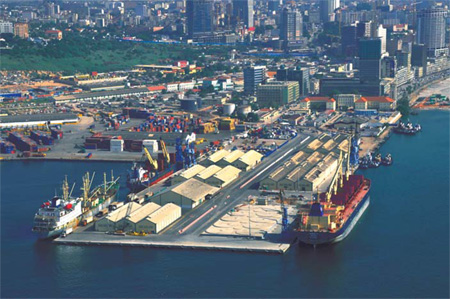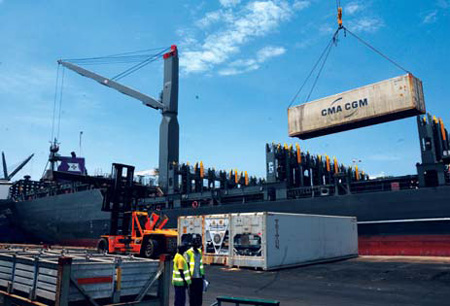Port of Luanda helps fuel Angola's recovery
Updated: 2011-09-16 08:03
(China Daily)
|
|||||||||||
|
The Port of Luanda is the country's largest and is now undergoing a massive facelift. Photos Provided to China Daily |
|
Offloading times have already decreased significantly at the port. |
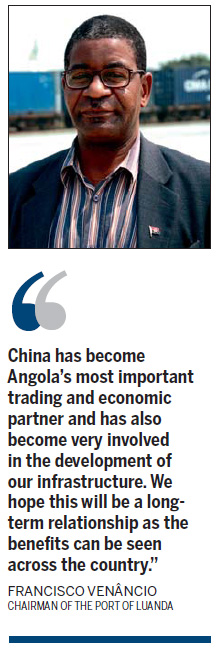
Chairman Francisco Venancio: China's importance in trade
Since the April 2002 peace deal that brought an end to more than 25 years of civil war, Angola has undergone a remarkable transformation to become one of the world's fastest growing economies.
Before slowing down in 2009, the South-West African nation achieved 11.1 percent average annual growth in GDP since 2001, an average that outpaced even China.
The balance of trade was tipped heavily in Angola's favor. Exports, of which crude oil comprises the lion's share, grew strongly in 2010, while imports were only one third of the total exported.
Volumes are now rising sharply in both directions. Exports expanded strongly last year, while imports, originating mostly from Africa's leading trade partner China rose only at half the pace of exports.
Export earnings are the fuel for the government budget for 2011, a third of which has been set aside for social projects, and they also help pay for imports, whose importance is vital if Angola is to achieve its ambitious goals for national reconstruction.
Years of conflict decimated Angola's production and industrial capacity to the extent that the nation still relies heavily on construction materials, machinery, vehicles and even foodstuffs from abroad.
As a result the nation's ports are braced for a massive increase in traffic - as much as 5 million tons in additional goods between 2011 and 2015 requiring reception, handling, logistics and storage, according to Deputy Minister of Transport Jos Joo Kuvingua.
The point of entry for over 80 percent of all imports to Angola, the Port of Luanda will naturally be handling much of the increase.
"If you take into account the cost of maritime transportation and the investment in ports required to purchase equipment and merchandise, you can appreciate the economic and financial importance of the port company in Luanda," explained Francisco Venncio, the port company's chairman.
"I believe we will continue to be the port of reference for investment over the next few years."
Well positioned
Blessed with many manmade and natural advantages, Luanda is not only well placed to serve Angola's needs, but also its neighboring countries.
Located in a large, well-protected bay with a deep entrance canal, its facilities include an extensive cargo area, additional multi-purpose space and a container terminal.
The port was certified as compliant with International Ship and Port Facility Security System in 2004 and has remained certified since.
In July 2010 Venncio unveiled a wide-ranging plan for expansion and development by private sector partners on 20-year concessions, leading to total investments of over $350 million.
A mile of new quayside and two new terminals, including one for the hydrocarbons sector, have been constructed in the last five years.
The strategic plan for the next five years aims to build on the recent successes.
"Our quays need to be adapted with new naval construction technologies," Venncio pointed out.
"Investment in rehabilitation has not been limited to one area - we have invested in our entire infrastructure, and because we have to handle almost 50 percent of containerized freight and general cargo, we have also invested in more flexible and efficient equipment," Venncio added.
Improvements have already been made. In December, the chairman announced that the average time to offload and process goods through customs at the port had been slashed from the stupefying figure of 80 days in the past to only 28 days in 2010. This has brought significant savings for shipping companies, importers, and eventually, consumers.
As operations become more streamlined and seamless, the port's chairman is convinced the congestion that plagued Luanda's port in previous years is most definitely a thing of the past.
"We have to constantly reinforce the port's mission," Venncio said, "which is to be competitive, efficient and productive, while reducing the transportation costs of imported goods as much as possible."
It is an important message that has been well received by Angola's Chinese trading partners.
Venncio argues that times have changed and that this can be seen across the board.
"There is a completely different reality in 2011 than there was 10 years ago," he added. "Today we are focusing on public-private partnerships as the companies that were awarded concessions are privately owned. We now have to focus on training to manage their activities and the administration of the port authority."
The next challenge is development of Barra do Dande port just north of the capital in neighboring Bengo province.
The 2,400-acre site is currently being made safe for development by the National De-mining Institute, which has already secured 400 acres.
The new port looks set to create strong synergies with the capital's facility positioning Angola as a major maritime transportation hub for South-West Africa.
The concept of becoming a regional hub is fast gaining relevance and importance as China increases its trade with the region, and particularly with Angola.
"China has become Angola's most important trading and economic partner and has also become very involved in the development of our infrastructure," Venncio said.
"We hope this will be a long-term relationship as the benefits can be seen across the country."
With the investment in and the development of the Port of Luanda on track, Chinese companies will equally see the benefits as goods will be cheaper to import to Angola and they will get to their destinations much more efficiently.
(China Daily 09/16/2011 page26)
Editor's Picks

|
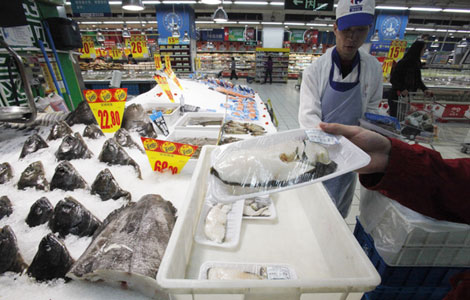
|

|
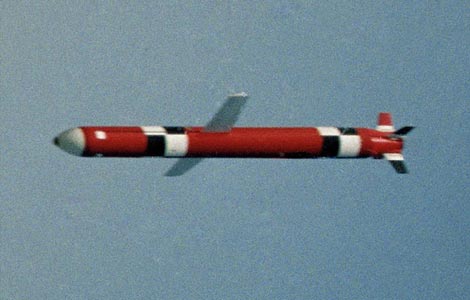
|

|

|
